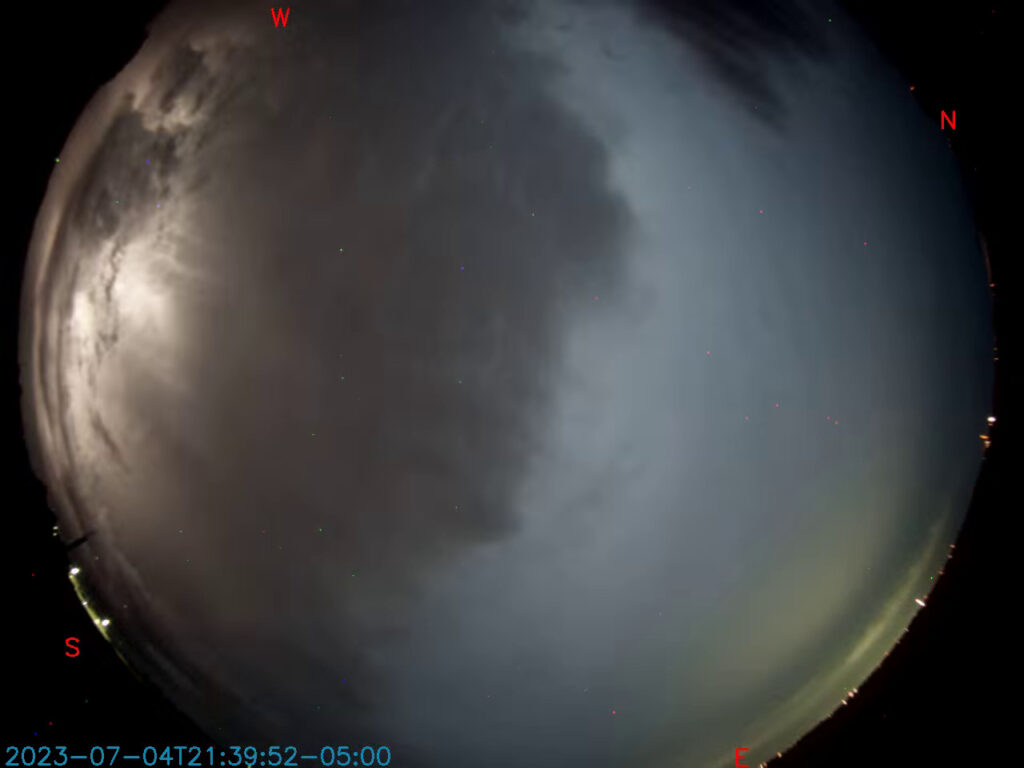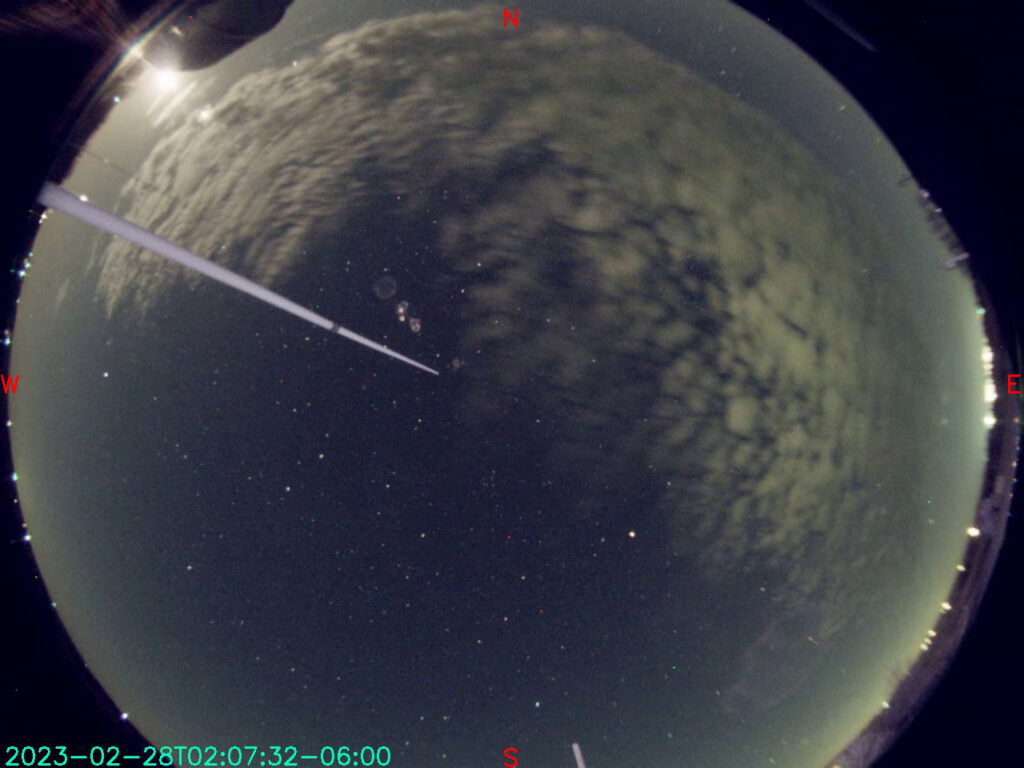1. Better sky status than your local forecast
Astronomy forecasting has made significant advancements in recent years, thanks to tools like “Clear Outside” and “Clear Sky Charts“, which provide a fairly accurate idea of the sky conditions. However, let’s admit that these forecasts are not infallible, and there’s nothing like actually observing the real-time conditions of the sky. We’ve all experienced situations where our weather app predicted sunny weather, but we ended up getting caught in the rain while outdoors. An all-sky camera serves as the perfect solution, as it remains outside to capture the actual sky conditions, just like being “rained on” in place of us.

2. Check your sky without your eye’s dark adapting
Many adverse sky conditions remain unnoticed until your eyes have fully dark adapted. However, an all-sky camera does not encounter this issue. Here’s a brief list of things that are difficult to see until your eyes have adapted to the darkness:
- Smoke
- Thin high clouds
- Airglow (night glow)
- Aurora
- The severity of light pollution
We have another article listing 6 things in the sky besides clouds that can ruin your astrophotography or observing session. Most listed are able to be picked up by an all-sky camera.

3. Is it my equipment or my sky?
Do you ever find yourself pondering the question, “Is the issue with my equipment or the sky itself?” This thought often arises, especially when managing a remote observatory.
In such cases, an all-sky camera proves to be an invaluable asset for both local and remote observatories. In fact, it surpasses cloud sensors in effectiveness! While cloud sensors serve their purpose well, nothing compares to the capability of an all-sky camera to provide real-time visibility of approaching clouds from the horizon, the presence of isolated clouds, and the types of clouds that currently obscure the sky.

4. Learn the difference between a mediocre sky and a great sky
Analyzing all-sky images from night to night is a valuable method to distinguish between average and exceptional skies. Nights with outstanding moonless skies are rare occurrences. By promptly checking your all-sky camera, you can determine if you are blessed with great skies. If the conditions are favorable, seize the opportunity to capture breathtaking photos, engage in scientific endeavors, or simply indulge in visual observation.
Related Articles
Astra180 All-Sky Camera
- Astra180 User Manual
- Benefits of an all-sky camera for astronomy
- 6 things in the sky besides clouds that can ruin your astrophotography or observing session
- Video: Mounting the Astra180 All-Sky Camera
- Top 5 All-Sky Camera Software
- Do your birds love your all-sky camera?
The StarSync Tracker
Shutter Latency Tool (NEXTA)
Other Astronomy Related Topics
Astra180 USB All-Sky Camera
It is a great tool to see sky conditions to aid your astronomy work.
Get instant status of remote or local observatory sky conditions
See clouds before they get in your frame
Visualize sky conditions from night to night
Can show the Milky Way (even winter Milky Way), Aurora, smoke, air glow, even high thin clouds
Compatible with many software packages
ASCOM Compatible
INDI Compatible
…